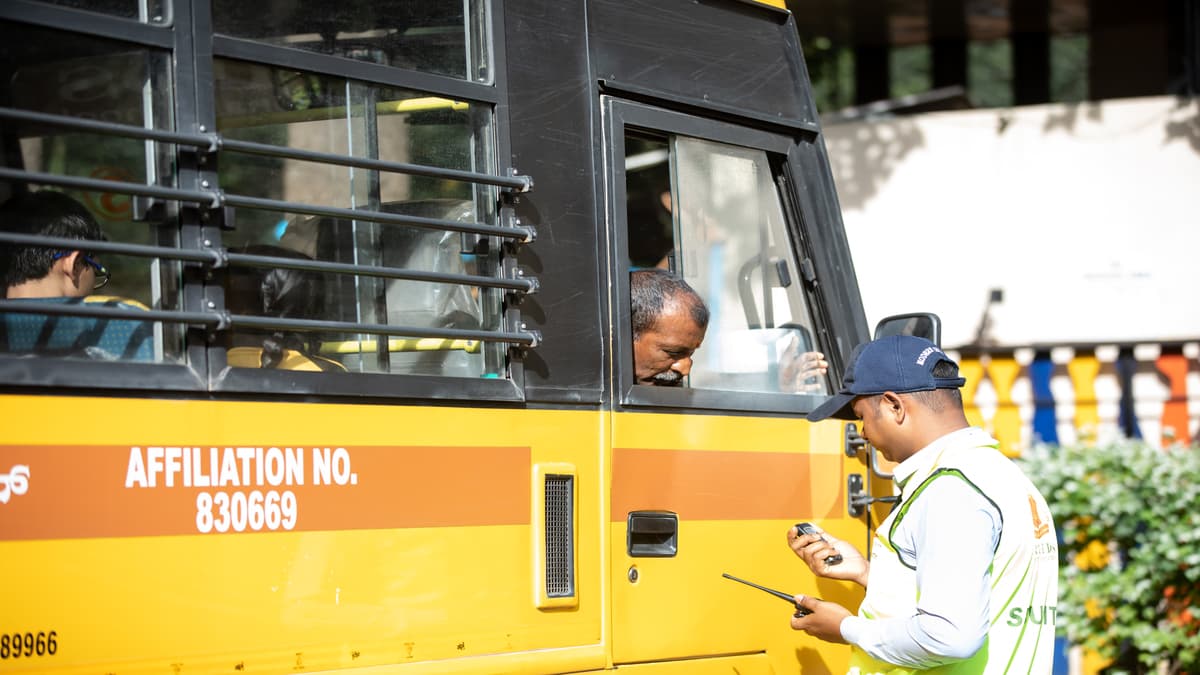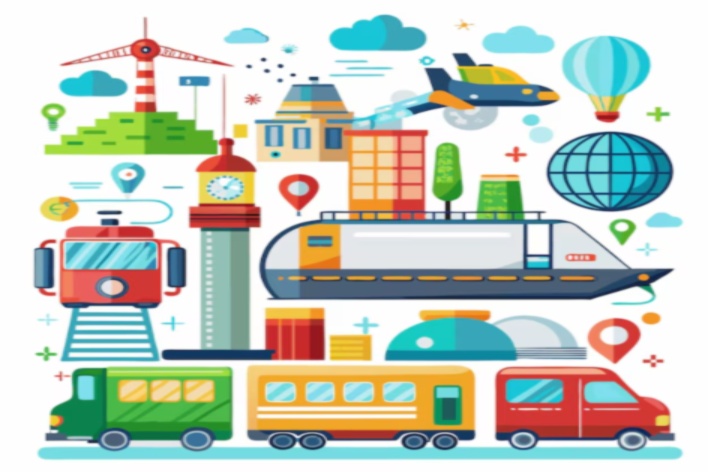Directions and Transport Information
By Monisha |
Date 20-10-2023

Table of Contents
Admissions Open for
Introduction:
In the grand tapestry of education, where every thread weaves a story of growth and learning, accessible directions and transportation information systems stand as guiding stars. They illuminate the path, ensuring that the journey of education begins and ends with confidence, ease, and safety. Navigating the complexities of school campuses, transport routes, and emergency procedures might seem trivial, but in reality, these details form the foundation of a seamless school experience. Let's embark on this exploration, understanding the vital role these accessible directions play in fostering a hassle-free and confident school experience for students, parents, and visitors alike.
Finding School Locations:
Imagine a sprawling school campus, bustling with activity and excitement. For newcomers, parents, and even students transitioning to new grades, finding specific locations within this labyrinthine environment can be daunting. Clear directions to school buildings, classrooms, administrative offices, and other essential facilities simplify this navigation. Signposts, maps, and digital guides act as beacons, ensuring that everyone can locate their destinations without unnecessary confusion or delays. By providing these clear directions, schools pave the way for a stress-free experience, allowing students and parents to focus on the joys of learning rather than worrying about getting lost.
Easy Access for Visitors:
The first impression is often the most lasting one. When parents and visitors approach a school, the ease with which they find the entrance sets the tone for their entire experience. Accessible directions play a crucial role in creating a welcoming environment. Whether it's open house events, parent-teacher meetings, or orientation sessions, clear signage and instructions guide visitors to the heart of the school. This warm welcome fosters a sense of belonging, ensuring that every interaction begins on a positive note.
Transport Routes and Timings:
For many students, especially those who rely on school transportation, the journey to and from school is a significant part of their day. Transparent transportion information systems, including bus routes, timings, and pick-up points, becomes invaluable. Parents plan their mornings around these schedules, ensuring that their children reach school safely and punctually. By providing this information clearly, schools empower parents with the knowledge they need to organise their daily routines effectively. Moreover, students gain confidence in their daily commute, knowing exactly when and where they should be for pick-up and drop-off.
Streamlined Commuting:
Imagine a fleet of buses converging at the school gates in the afternoon. Without proper coordination and clear instructions, this process could become chaotic. Transparent transport information streamlines this entire system, ensuring that buses arrive and depart in an organised manner. Students board their respective buses with confidence, knowing that they are headed in the right direction. This organised approach not only saves time but also minimises potential confusion, creating a smoother experience for everyone involved.
Emergency Procedures:
In times of crisis, clarity is paramount. Schools must have well-defined emergency procedures, including evacuation routes and assembly points. Accessible directions during emergencies are not just helpful; they are essential. During fire drills or other emergency simulations, clear signage guides students, staff, and visitors to safety. In the event of a real emergency, these well-practised routes become lifelines, ensuring that everyone can navigate the situation calmly and swiftly. Accessible directions during emergencies are not just about physical safety; they provide peace of mind, knowing that the school community is well-prepared to handle unforeseen situations.
Supporting Students' Independence:
As students progress through their educational journey, they gradually gain independence. For older students who might use public transportation or walk to school, having clear information about nearby bus stops, train stations, or pedestrian routes is empowering. It fosters a sense of responsibility and self-reliance, crucial skills that extend beyond their school years. Accessible transport information becomes a tool for nurturing independence, encouraging students to navigate their world confidently.
Facilitating Parent Communication:
The relationship between schools and parents is built on trust and effective communication. Transparent transport details facilitate this communication. Parents can coordinate with the school and transport services, ensuring that their children are in safe hands throughout their journey. Whether it's a change in pick-up arrangements or a simple inquiry about the bus route, accessible transport information becomes a channel through which parents can engage with the school, fostering a collaborative environment focused on student well-being.
Conclusion:
In the intricate dance of education, accessible directions and transparent transport information are not mere details; they are the very markers that guide our school community. They are the signposts of safety, the navigational aids of confidence, and the bridges of communication. As we explore their significance, we emphasise our unwavering commitment to creating an educational environment where every step of the journey is guided by clear directions, ensuring smooth travels and confident arrivals. These markers, often overlooked in their simplicity, are the silent architects of a positive and secure school experience, shaping memories and fostering a sense of belonging within our educational community.
FAQs:
What is the best way for real-time traffic updates?
This way, you can get more information about traffic jams, closed roads, and accidents in real time by using other applications similar to Google Maps or Waze.
Where is the nearest public transportation station?
You can even use apps like Google Maps, or you can ask someone at information kiosks usually located at prominent points throughout most cities for a bus stop, train station, or metro.
What do you do if you are Lost in a New City ?
If you become lost, use a GPS-enabled app or look for a local who could guide you. The street signs and information booths can also be helpful in this case.
Other Related Sections
NCERT Solutions | Sample Papers | CBSE SYLLABUS| Calculators | Converters | Stories For Kids | Poems for kids | Practice Worksheets | Formulas I Parent Resources
CBSE Schools In Popular Cities
- CBSE Schools in Bangalore
- CBSE Schools in Mumbai
- CBSE Schools in Pune
- CBSE Schools in Hyderabad
- CBSE Schools in Chennai
- CBSE Schools in Gurgaon
- CBSE Schools in Kolkata
- CBSE Schools in Indore
- CBSE Schools in Sonipat
- CBSE Schools in Delhi
- CBSE Schools in Rohtak
- CBSE Schools in Bhopal
- CBSE Schools in Aurangabad
- CBSE Schools in Jabalpur
- CBSE Schools in Jaipur
- CBSE Schools in Jodhpur
- CBSE Schools in Nagpur
- CBSE Schools in Ahmednagar
- CBSE School In Tumkur

Call Us to know more about Orchids
Swipe Up




.jpg&w=1920&q=80)












